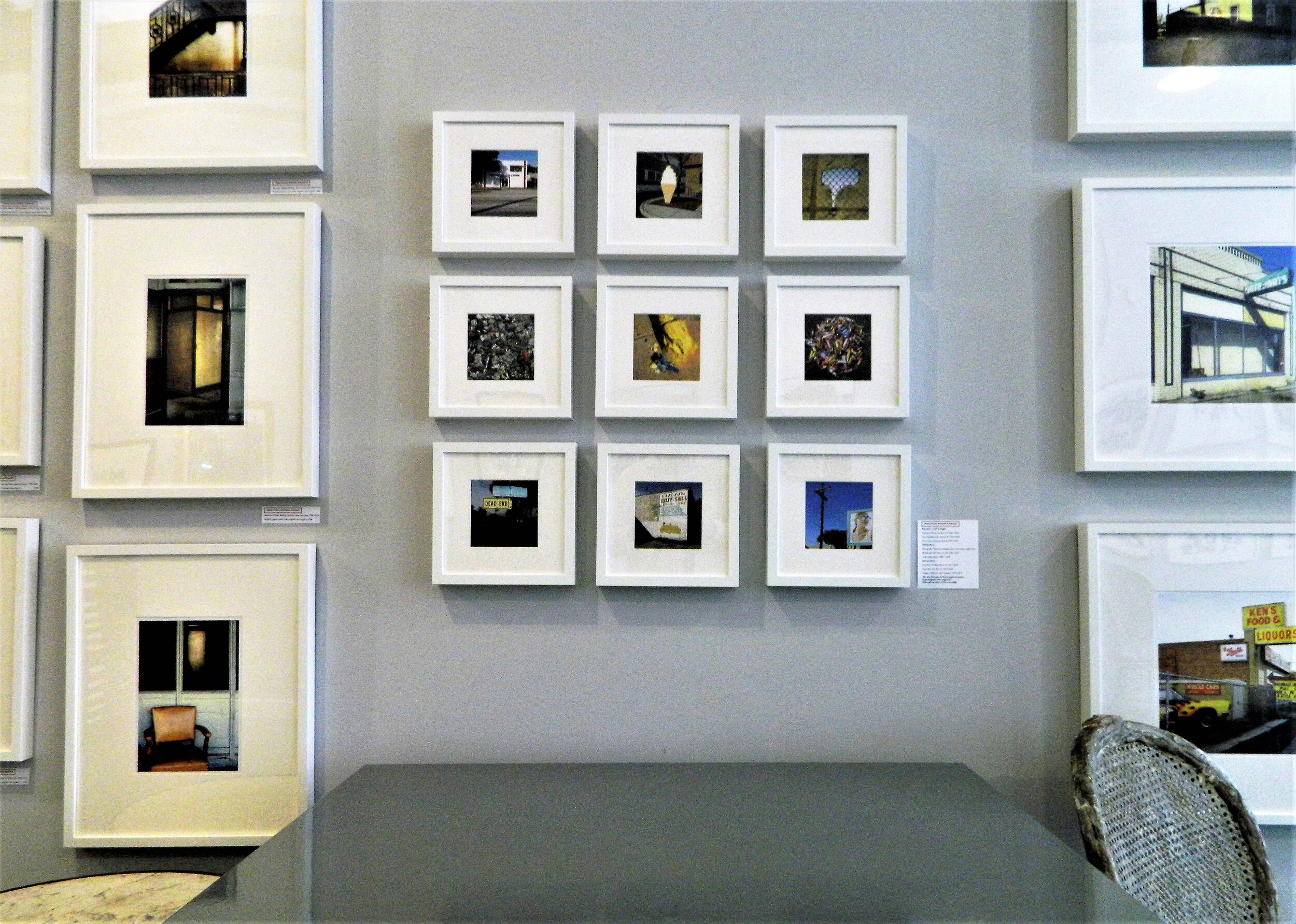Jay W. Boersma
Jay W. Boersma, 1947 Chicago, IL.
ON THE WORK OF PHOTOGRAPHER JAY BOERSMAN
By Dr. David Sokol
Regardless of the medium in which he or she works, every trained artist is concerned with the issues of composition, structure, light, and subject matter. What differs from one to another is the artist’s intent and the potential of the medium to effectively convey that intent. For Jay Boersma, the medium has always been photography and, as the work in this exhibit amply shows, his intent has been to unflinchingly and directly portray the world he has suggested as his subject matter.
As a student of both Aaron Siskind and Harry Callahan, at RISD, Boersma had both the framework and the location at hand to start photographing the spaces that have been a major portion of his life’s work. He has noted that a combination of Sunday Blue Laws and no overnight parking gave him the setting and time for photographing urban spaces without the distraction of people. The mixture of historic and newer buildings, like those of the one of the more modern and classical building, or the image of the Chinese restaurant on the same block as the Neo-classical bank, made the cityscape more interesting to the artist as well. Those photographs are neither directly influenced by the work of earlier Precisionist artists nor share the moodiness of Edward Hopper’s paintings of urban spaces, but they are “kindred spirits” in making us see the spaces and buildings for what they are.
Back in Chicago and building a career in both his work and teaching, Boersma was tapped to be one of the thirty-three photographers to chronicle life in and around the city and the suburbs, for the “Changing Chicago” project, starting in 1987. At home in the South suburbs of Chicago, an area usually overlooked in favor of the very affluent northern or growing western suburbs, and recognizing how many of the abandoned or underutilized buildings were a part of the changing American pattern of development, he noted the combination of often marginal or underutilized buildings, created for a more middling cliental than major urban or totally rustic users. The artist refers to these places as “in-between” spaces. Whether abandoned like the Nortown Movie Theater and the empty shopping center with its blank sign, or unabashedly commercial, as the low rise automotive row at Harding Street, Boersma shoots these streets and buildings with the same directness and attention to composition as he did his urban buildings in Providence.
A third group of photographs, and probably both the most poignant for their depiction of a once proud pioneering skyscraper and National landmark, and an object lesson in never giving up hope by its subsequent rehabilitation, and remake into an impressive hotel a century after it was constructed is the group of photographs of the Reliance Building, taken in 1994. By then an acknowledged landmark, the building was none-the-less all but completely abandoned, bastardized on the lower floors, and in partial ruin due to leaks and other effects of neglect.
Exhibition view: “Urban Studies” at Rare Nest Gallery, January 19th thru March 9th, 2019
Boersma was fascinated by the combination of still eerie grander and the mute testimony to neglect that the building presented, and look one of his most powerful set of photos. His signature combination of capturing the direct simplicity of straight lines and spaces are augmented by a stronger commitment to utilizing light as a compositional element, than in most of his earlier work. Though some of the street scenes in Providence were early examples of his interest in the compositional potential of areas of light and dark, Boersma takes that dimension of his photos to a new and impressive level in the images of the hallways and the windows in the upper floors of the building. Many of the images show the impact of changes in use of the building over the years, but it is the straight on shots of the office spaces and hallways that this writer best summarizes the artist’s vision.
Though the fourth and final group of photographs in this exhibition is merely a sample of the images of places and spaces Boersma has visiting and photographed over the past few decades, the selection gives the viewer a chance to see how he has applied the early lessons and intuitions he had about the built environment to these other settings. Whether in the Mediterranean, Cuba [as seen in several of these images], or the Aegean, though people occasionally appear in the work, they are incidental to the artist’s concern, even preoccupation, with the places built for the use of those people.
Boersma work has evolved over a long career, he has changed from black and white to color photography, from one format to another, and from film to digital, but his eye and concern for composition and his interest in depicting the world remain constant. He says: “I remain fascinated by the built world and its endless variety of human-made structures, environments, and details and the unique ways in which these are transformed by age, use, and – in particular – the act of photographing them.”
ABOUT THE AUTHOR: Dr. David M. Sokol
David M. Sokol has had a 40-year career as a professor of art history and has taught at the University of Illinois at Chicago since 1971. He chaired the department of art history for 17 years, becoming professor emeritus in 2002. In addition to teaching and writing on American and European art and architecture, Sokol has published articles and reviews on Frank Lloyd Wright and Unity Temple. He served on the board of directors for the Unity Temple Restoration Foundation and the Frank Lloyd Wright Home and Studio Foundation, and currently serves on the Illinois Historic Sites Advisory Council.
Exhibition view: “Urban Studies” at Rare Nest Gallery, January 19th thru March 9th, 2019



